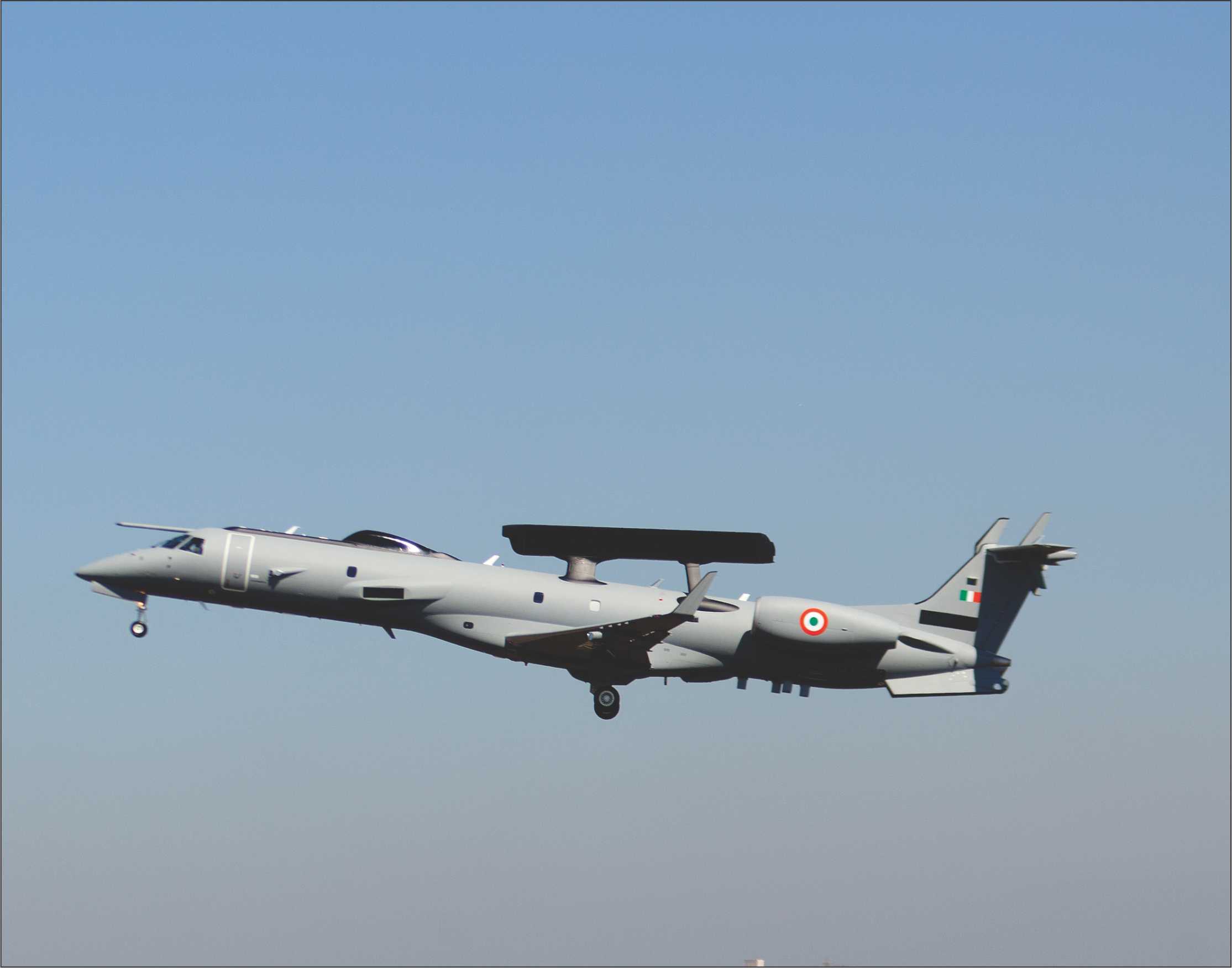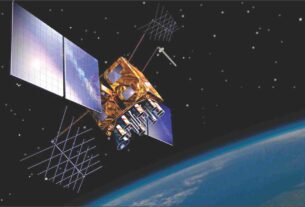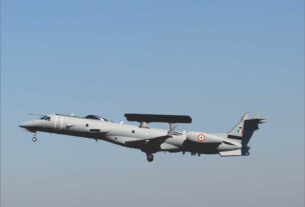|
In an age of supersonic fighters and long range ballistic and cruise missiles, Indian Armed Forces would always feel handicapped due to the lack of air based surveillance platforms for providing sufficient air coverage.
The armed forces would have no reaction time, which is often within seconds and minutes and only an AWACS can enable the armed forces to respond to such threats arriving on our land at supersonic speeds. The Indian security planners are aware of the lurking danger being posed from across the northern and western borders, but the measures to counter the challenge are being implemented in a lackluster manner. The IAF has projected an immediate requirement of five high end AWACS and ten medium categories AEW&C besides a string of 30 fixed Aerostats along the sensitive border areas till the end of this decade. Effective options Though the country has a very large international border and coastline to defend, the government cannot afford to have a pore-free border. Hence a mix of high end radar network to cheaper and lighter versions are planned to be inducted which includes the AWACS, AEW&C and the aerostats. Indian Air Force presently deploys two Israeli Rafael aerostat radars out of which one was damaged beyond repair in 2009. The aerostats were deployed in 2007 and 2008 for which orders were placed in 2002, post Kargil conflict and the Operation Parakram. Since the aerostats are considered poor-man’s radar. Meanwhile the government is proceeding with acquisition of six aerostat radars, for which the Israeli company will have to participate in the international bids. The Indian DRDO has also an ambitious program to come out with powerful aerostat radar called Akashdeep and the next generation Nakshatra. The Nakshatra aerostat system aims to track a 450 kms radius, which is about four times the present 110 kms radius surveillance track of Akashdeep. The system being developed by the Aerial Delivery Research and Development Establishment (ADRDE), Agra can be tested up to 4.5 kms altitude, with a payload capacity of 800 kg to 1000 kg and will be 17,000 cubic meter volume. Meanwhile, the government is also working on IAF request to acquire six more aerostats for which the MoD has begun the process, which will be worth US$ 400 million. The British BAE Systems, US companies Lockheed Martin and Northrop Grumman, France’s Thales, Israel Aerospace Industries and Russia’s Rosoboronexport are expected to compete with the Israeli Rafael. The previous two aerostats delivered by Israel carry a variety of sensors, including EL/M-2083 air surveillance radars, communications intelligence (COMINT) and Signals Intelligence (SIGINT) payloads providing round the clock all-weather comprehensive coverage of sensitive border areas, especially with the ability to scan sectors where land-based radars can survey limited areas due to the terrain or other limiting factors. The Israeli aerostat has the M-2083 air surveillance radars supplied by IAI Elta Systems, communications intelligence and Signals Intelligence payloads which extend all weather comprehensive coverage of border areas. The 71 meter aerostat is build by US TCOM and at present among the largest. After operating three IL-76 based Israeli A-50EI Phalcon AWACS since last four years and jointly developing three Embraer based EMB- 145 AEW aircraft with Brazil, Indian Defence Research and Development Organisation now hopes to move on to the next phase of fully indigenous AWACS for which the Cabinet Committee on Security has given its nod for proceeding ahead last March. The DRDO has conveyed to the government that the project will be completed within 84 months. i.e. by the end of 2020. The IAF will have to depend on the upcoming indigenous AWACS as government is not expected to sanction fresh acquisition of more AWACS, though it is expected that the MoD may exercise the option of acquiring two more AWACS from Israel However, the DRDO has also not yet made any significant move towards acquiring the aircraft for the indigenous AWACS. The aircraft to be chosen for the indigenous AWACS must arrive in India within next three years so that its conversion into a full fledged AWACS is realized by the stipulated time of 2020. The MoD has even not released the RFI for the air platform on behalf of the DRDO. The next step of releasing the RFP and the selection process will take long for the IAF to complete. Though China has raced far ahead as far as flying its eyes in the sky is concerned, Pakistan has also taken a lead after acquiring four SAAB-2000 AWACS and three more to join the fleet from the Chinese ZDK-03 AWACS. China has already deployed around 20 such surveillance aircrafts, which includes the indigenous ones. Yet, considering the vast land borders of 14,000 kms and over 7,000 kms coast line the air surveillance fleet of the Indian armed forces is too small to serve the surveillance needs of the Indian Air Force. Critical asset The proposed strength of the surveillance aircraft by the end of this decade, considered as critical force multiplier having enormous ability to keep a tab on the military activity inside the enemy territory, will however be not in sufficient numbers to ensure intrusion free skies. The surveillance aircrafts can detect the enemy aircraft and the ballistic and cruise missiles several hundred kms inside the enemy territory, which will alert the air defence aircraft and the anti missile systems. Since the neighboring countries are armed with long range missiles and modern fighters, the AWACS and AEW& C aircraft are considered as most essential to nip the danger in the bud. The aircraft can even detect the ground troop’s movement on the enemy side. The aircraft has the capabilities to ensure faster sensor-to-shooter loop, quicker defensive or offensive retaliatory action against the enemy offensives. Since the AEW&C radar gives a coverage of only 270 degrees, the AWACS gives 360 degrees coverage, hence the acquisition of AWACS, though much more expensive, is considered tactically essential. AWACS have longer endurance in air as its radar is mounted on larger aircraft while the AEW&C is based on a smaller plane, which will naturally have less flying duration. Under the Long Term Integrated Perspective Plan (LTIPP) the Ministry of Defence has planned the acquisition of a mix of larger AWACS and the smaller Airborne Early Warning and Control System aircraft. The Israeli Phalcon radar is built on ELTA ELM-2075 AESA L-band radar which also has the electronic and communications intelligence gathering (ELINT & COMINT) capabilities. The radar mounted on top of the aircraft can receive transmissions from distant and near based air and ground stations. This uses sensor fusion to provide a total scene of the battle arena spread around few hundred kilometers. The aircraft has facility to engage in on board communications which can convey the friendly forces a comprehensive picture of the battle area on the ground and in the air. This is why AWACS is much preferred by the air warriors. The defence minister Antony informed the Parliament that the indigenous development program of the AWACS was approved to leverage the experience and expertise gained in the design and development of airborne early warning and control systems(AEW& C) for the IAF. Presently the IAF is operating three AWACS as force multipliers for specific area cover and not for surveillance of the entire Indian territory. Antony also informed that all the three AWACS which are large aircraft mounted radars are part of the network centric operations of the IAF and are able to provide adequate coverage of specified areas. Hence, Antony said that the enhancement of airborne surveillance and command and control capabilities of the IAF is sought to be achieved through procurement of additional AWACS. Thus the Defence Minister has given adequate hints that the option for two additional AWACS from Israel will be exercised. But according to sources, many more essential defence acquisition plans are pending due to funds constraints and the AWACS will not be among top priority. Hence one can assume that the AWACS acquisition plans will remain mostly on papers at least for the next few years. |
|





